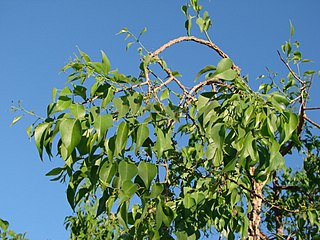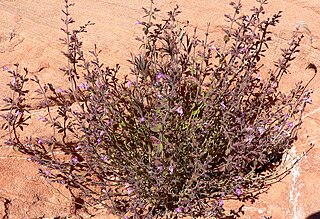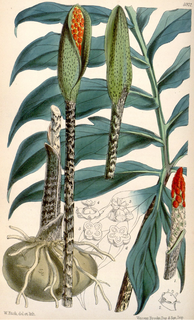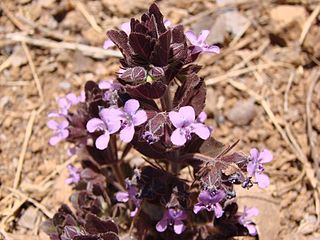| Rhabdocaulon | |
|---|---|
| Scientific classification | |
| Kingdom: | Plantae |
| (unranked): | Angiosperms |
| (unranked): | Eudicots |
| (unranked): | Asterids |
| Order: | Lamiales |
| Family: | Lamiaceae |
| Genus: | Rhabdocaulon (Benth.) Epling |
Rhabdocaulon is a genus of plants in the Lamiaceae, first described as a genus in 1936. It is native to South America. [1] [2]

The Lamiaceae or Labiatae are a family of flowering plants commonly known as the mint or deadnettle family. Many of the plants are aromatic in all parts and include widely used culinary herbs, such as basil, mint, rosemary, sage, savory, marjoram, oregano, hyssop, thyme, lavender, and perilla. Some species are shrubs, trees, or, rarely, vines. Many members of the family are widely cultivated, not only for their aromatic qualities, but also their ease of cultivation, since they are readily propagated by stem cuttings. Besides those grown for their edible leaves, some are grown for decorative foliage, such as Coleus. Others are grown for seed, such as Salvia hispanica (chia), or for their edible tubers, such as Plectranthus edulis, Plectranthus esculentus, Plectranthus rotundifolius, and Stachys affinis.

South America is a continent in the Western Hemisphere, mostly in the Southern Hemisphere, with a relatively small portion in the Northern Hemisphere. It may also be considered a subcontinent of the Americas, which is how it is viewed in the Spanish and Portuguese-speaking regions of the Americas. The reference to South America instead of other regions has increased in the last decades due to changing geopolitical dynamics.
- Species [1]
- Rhabdocaulon coccineum (Benth.) Epling - southern Brazil
- Rhabdocaulon denudatum (Benth.) Epling - Brazil
- Rhabdocaulon erythrostachys Epling - southern Brazil
- Rhabdocaulon gracile (Benth.) Epling - southern Brazil
- Rhabdocaulon lavanduloides (Benth.) Epling - southern Brazil
- Rhabdocaulon stenodontum (Briq.) Epling - southern Brazil, Paraguay, northeastern Argentina
- Rhabdocaulon strictum (Benth.) Epling - southern Brazil, Uruguay, northeastern Argentina










